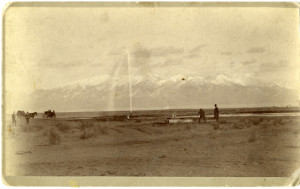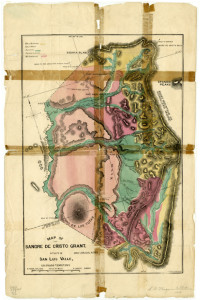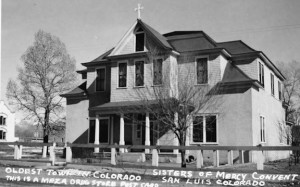Story
This Week in Colorado History
Colorado’s Oldest Town, San Luis, is Established
On April 9, 1851, Hispano farmers established San Luis, Colorado, and today, at 164 years old, it is the state’s oldest continuously occupied town. Located in south central Colorado near the New Mexico border, the San Luis Valley has been home to several different groups, one of the many reasons it holds historic significance for Colorado and the nation. The town was established by Hispano farmers, but the area was originally inhabited by prehistoric cultures dating back thousands of years.
The region saw the rise of Hispano occupation after Spaniard Juan de Onate reported discoveries of gold in the area. But it would be over two hundred years later in 1843 that Canadian-born Charles Beaubien purchased a portion of the Sangre de Cristo land grant to gain full ownership of the one- million-acre tract in the San Luis Valley, amassing his land ownership to more than two million acres between New Mexico and Colorado. Beaubien then began recruiting new settlers, which created an influx of people to the region, and the town of San Luis began to take shape.
The construction and location of the Plaza de San Luis de la Culebra established it as the center of the town and is now part of the Plaza de San Luis de Culebra Historic District, listed in the National Register of Historic Places in 1975. San Luis quickly became the hub of the region because of its close proximity to the main roadway that led south to Taos and north to Fort Garland, and with the introduction of the railroad, San Luis was able to trade more freely with Pueblo and Denver.
While the town has seen a large drop in population since the first World War, the town preserves its historic integrity by maintaining its already registered historic buildings, including the courthouse, the Church of Most Precious Blood, and numerous residential homes. San Luis persists through time as a living tribute to the greatness of Colorado, where its gorgeous setting within Sangre de Cristo National Heritage Area is a nod to not only our bountiful landscape, but to our diverse heritage as well.
For more information about architecture of San Luis visit http://www.historycolorado.org/archaeologists/culebra-river-villages-costilla-county-village-architecture-and-its-historic-context
Or to plan a trip to this beautiful historic region see https://www.fs.usda.gov/recarea/riogrande/recarea/?recid=80886



